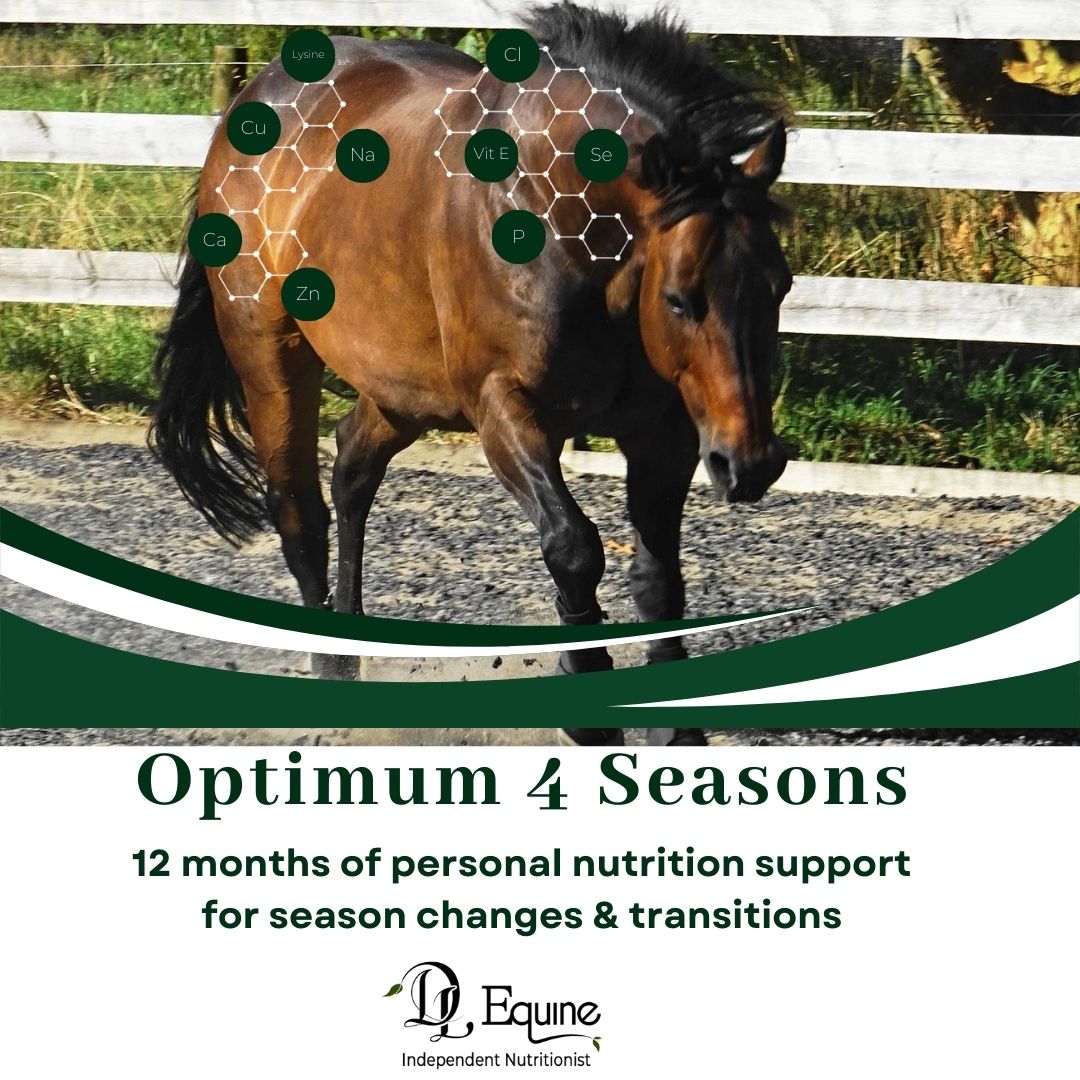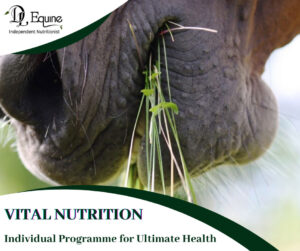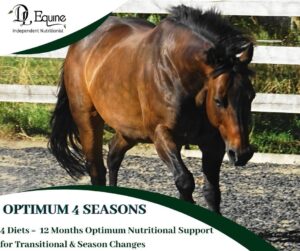With the plethora of gut supplements on the market now it can get really confusing as to what works, why and does my horse need it??
There are a ton of claims made around products, many of which are marketed to pull at your heart strings when it comes to feeding horses. They can range from the research-based facts all the way down to the ‘your horse will die without this’ declarations.
To clarify what is in these products and aid you in making an informed decision, as with any supplement buying, we need to understand the horse’s gut and digestion. Buying and feeding products without this fundamental knowledge will lead to wasting money and unbalancing your horse’s nutrition.
Firstly, we need to clarify ‘What is an enzyme’? These are biologically active proteins that catalyze the breakdown of dietary macronutrients into absorbable units.
Without getting too scientific here is a basic diagram of your horse’s gut.

Basic digestion processes in each part
Stomach – Produces various secretions, including hydrochloric acid (HCl) and peptidases, to begin to break down protein, and lipase, which breaks down fats.
Small Intestine – Enzymes secreted from the pancreas into here. Continue to digest and absorb proteins, fats, starches and sugars. Glycanases e.g. Amylase (starch digestion), Protease (protein digestion), Lipase (fat digestion).
Caecum – Houses the microbiome (billions of bacteria, fungi, and protozoa) which ferment structural carbohydrates, by products are Volatile Fatty Acids which horse uses for energy to fuel the body. Is some further digestion of starch. Enzymes here involved in grass digestion are celluloses. These produced by the microorganisms through fermentation processes and they to break down the cellulose in grass.
Large Colon, Small Colon – Microbial fermentation continues in large colon and produces VFA, methane, ammonia, B-vitamins, and amino acids. Primary function in the small colon is water absorption and formation of fecal balls.
Why do horses need gut supplements?
In the horse the GIT (gastrointestinal tract) is extremely sensitive and incredibly easy to upset.
- Not enough continual fibre will upset the stomach causing ulcers.
- Feeding large amounts of starch can mean the digesta moves too quickly thru the small intestine resulting in less time the enzymes have to act upon the food.
- This results in less nutrients digested, less efficiency in the GIT, greater amounts of undigested starch flowing into the caecum.
- The microbial population in a caecum is very specific in what feedstuffs it can digest. The microbiome here is requires a slow period of introduction to new feeds in order to gradually adjust (2-3 weeks) recruit good number of the right microbes for normal function. Again, too much starch and fast changes in feed cause the ph of the caecum to drop too low, increasing amounts of lactic acid bacteria, increasing incidences of colic, laminitis and acidosis.
- Rapid change in diet and dry feed without adequate water can cause compaction in the caecum and colic. Colic is also a risk in the large colon pouches which can easily become twisted and fill with gas due to fermentation of the feed.
In summary; sudden changes in diet, dehydration, stress, (environmental/ travel/competition/ illness/ medicine/ etc), large amounts of high starch feeds (including pasture) and low-quality forage diets can all wreak havoc on the horse’s gut. While horses naturally produce some digestive enzymes like pepsin, lipase, and amylase, their levels may be insufficient according to their needs.
Therefore, we can certainly aid the GIT with digestive enzymes to enhance nutrient digestibility and support digestive efficiency.
Will any gut enzyme supplement work?
No.
Here is what I look for in a GIT supplement as a nutrition advisor:
Scientific articles and ask the following Q:
- Who wrote this? -Are they a qualified nutritionist/ vet/scientist
- Where was it published? – Scientific journal, social media, website
- What evidence is it based on? – Studies or anecdotes, large number of horses or 2
- Is it recent? – Scientific research and understanding constantly evolves
- Has the product been evaluated as a whole or just the separate ingredients? (There may be research on individual ingredients but once put together with many other things in a supplement the action may change or negate).
You also need to stop and ask the question what specifically does my horse require help with in order to pick the correct supplement for them.
- High stress of competition? (are their natural starch-digesting enzymes overwhelmed).
- Changing home/ environment/ pasture?
- Change in feed/ hay?
- Illness?
- High starch feed or grass?
Specific enzymes in supplements:
Amylase, Xylanase, and Beta glucanase, are enzymes to digest specific complex sugars and improve nutrient absorption of starches and fibres and Beta glucanase may reduce sugar spikes in bloodstream.
Phytase supplementation can increase Ca digestibility as it breaks down phytic acid, a form of phosphorus found in plants like grains and hay. This may help reduce digestive upset, especially in horses fed high-grain diets or those under stress. Also may be helpful at a time when the forge is low quality these supplements as can help improve nutrient uptake.
Xylanase & Cellulase to aid in breaking down plant fibers normally fermented in the hindgut into simpler sugars that the horse can use for energy.
Selected research reading on horse gut enzyme supplementation:
Changes of the hindgut microbiota due to high-starch diet can be associated with behavioral stress response in horses. https://sci-hub.ru/https://www.sciencedirect.com/science/article/abs/pii/S0031938415003339?via%3Dihub Physiology & Behavior, 149, 159–164.
The Effect of Feeding Horses a High Fiber Diet With or Without Exogenous Fibrolytic Enzymes Supplementation on Nutrient Digestion, Blood Chemistry, Fecal Coliform Count, and In Vitro Fecal Fermentation https://www.sciencedirect.com/science/article/abs/pii/S0737080615004657
IFNM – Modulation of the equine microbiome by pasture and feed supplements: A metabolomics approach. https://www.researchgate.net/publication/335117686_Modulation_of_the_equine_microbiome_by_pasture_and_feed_supplements_A_metabolomics_approach
https://www.researchgate.net/publication/8491272_The_apparent_digestibility_of_phytate_phosphorus_and_the_influence_of_supplemental_phytase_in_horses
Examination of the use of exogenous α-amylase and amyloglucosidase to enhance starch digestion in the small intestine of the horse. https://sci-hub.ru/https://www.sciencedirect.com/science/article/pii/S0377840103002906 Animal Feed Science and Technology, 114(1-4), 295–305.
Visualization of the Anticaging Effect of Ronozyme WX Xylanase on Wheat Substrates. https://sci-hub.ru/https://onlinelibrary.wiley.com/doi/abs/10.1094/CCHEM-10-12-0130-R Cereal Chemistry Journal, 90(5), 439–444.
Exogenous fibrolytic enzymes improve carbohydrate digestion in exercising horses. chrome-extension://efaidnbmnnnibpcajpcglclefindmkaj/https://www.jafs.com.pl/pdf-118207-48761?filename=Exogenous%20fibrolytic.pdf Journal of Animal and Feed Sciences, 29, 35–45.






